The quality of the sculpture is to be noticed on the backrest, the crosspiece, as well as on the uprights of the feet: foliage, flowers, staples, scrolls...
These wide armchairs with flat backs, with slender proportions, rest on arched legs raised with acanthus leaves.
Pierre Falconet, carpenter in seats was born in 1683. He practiced rue de Clery in Paris, under the sign of Fidelity, between 1738 and 1750.
He was succeeded by his son Louis, who obtained his master's degree in 1743.
We owe their workshop some remarkable, finely crafted seats.
Dimensions: H. cm x W. cm x D. cm (seat height: cm)
Beech
Stamped "FALCONET" below the waistband on the back crossbar of one of the chairs
Beautiful tapestry upholstery with small dots
Very good state
18th century
The so-called ''à la Reine'' armchair was created at the beginning of the 18th century in homage to Marie Leszczynska Queen of France by her marriage to Louis XV.
This seat is characterized by a slightly inclined and padded flat backrest. Its trapezoidal seat has a curved front belt. It is designed to meet the demands of fashions to make it easier for ladies to sit down with their loose dresses. The lines soften to create lighter and arched curves, the armrests are more open, the seat widens, the padded backrests offer better comfort.
The Queen's armchair is dressed in cartouches, shells and clasps decorated with water leaves or acanthus. This Louis XV armchair is fond of richly flowered tapestries sometimes lined with gilded or lacquered wood.
the armchair à la reine is a piece of furniture that generally remains leaning against a wall because its design, more massive than a convertible, does not predispose it to being moved.







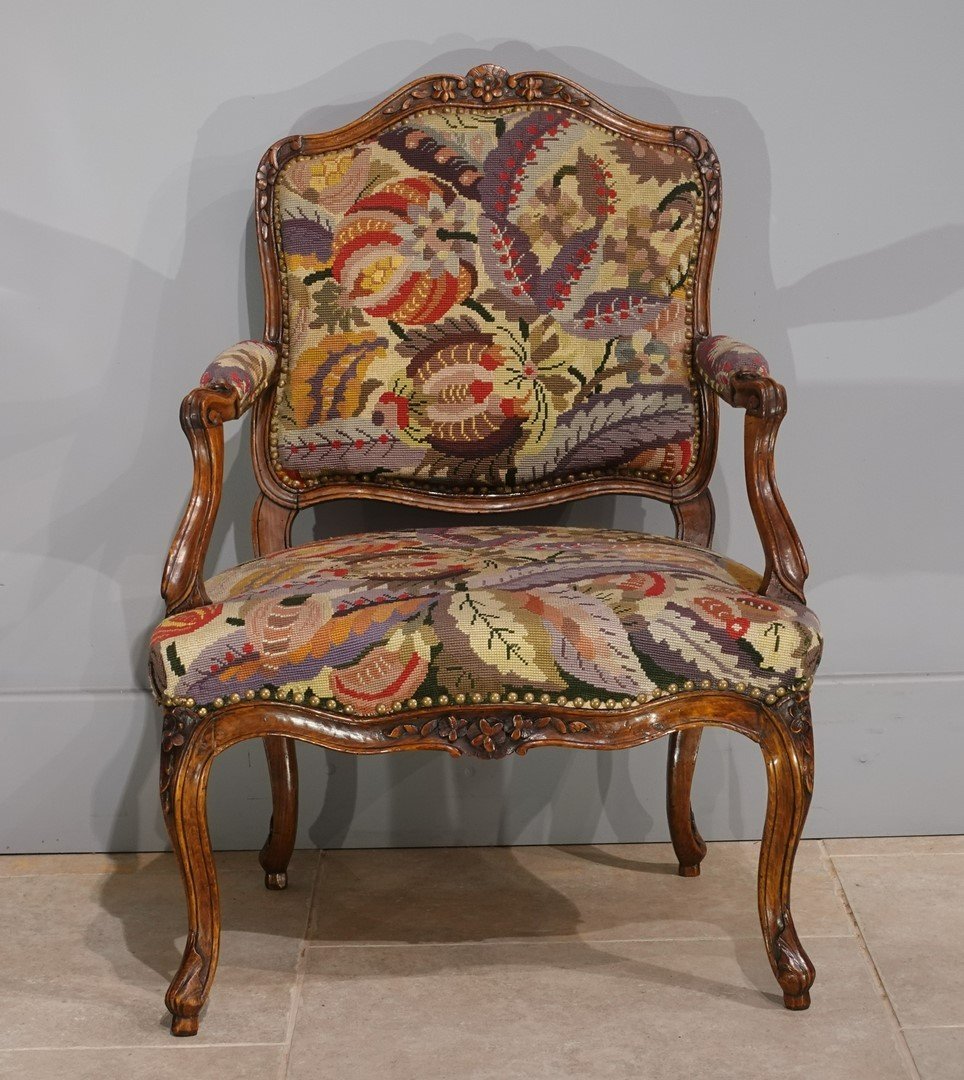
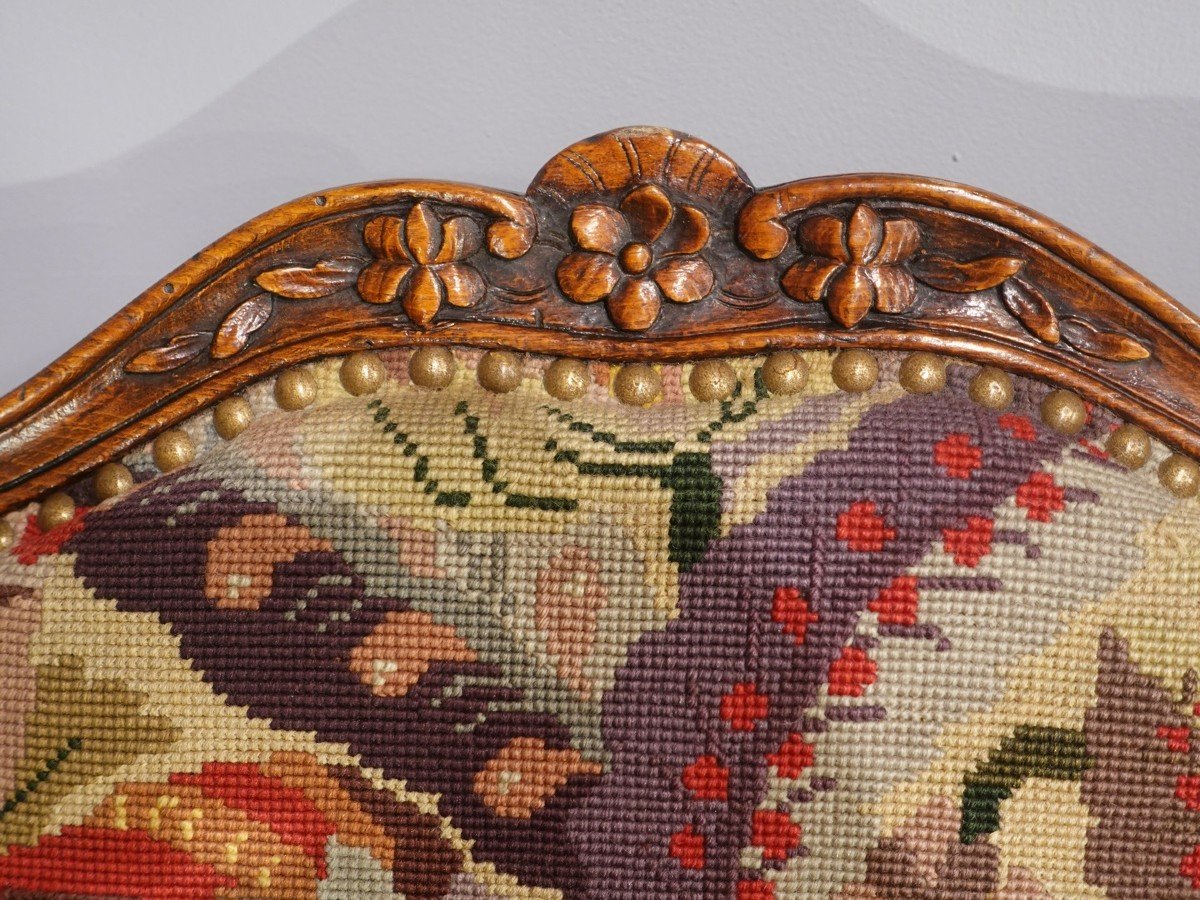

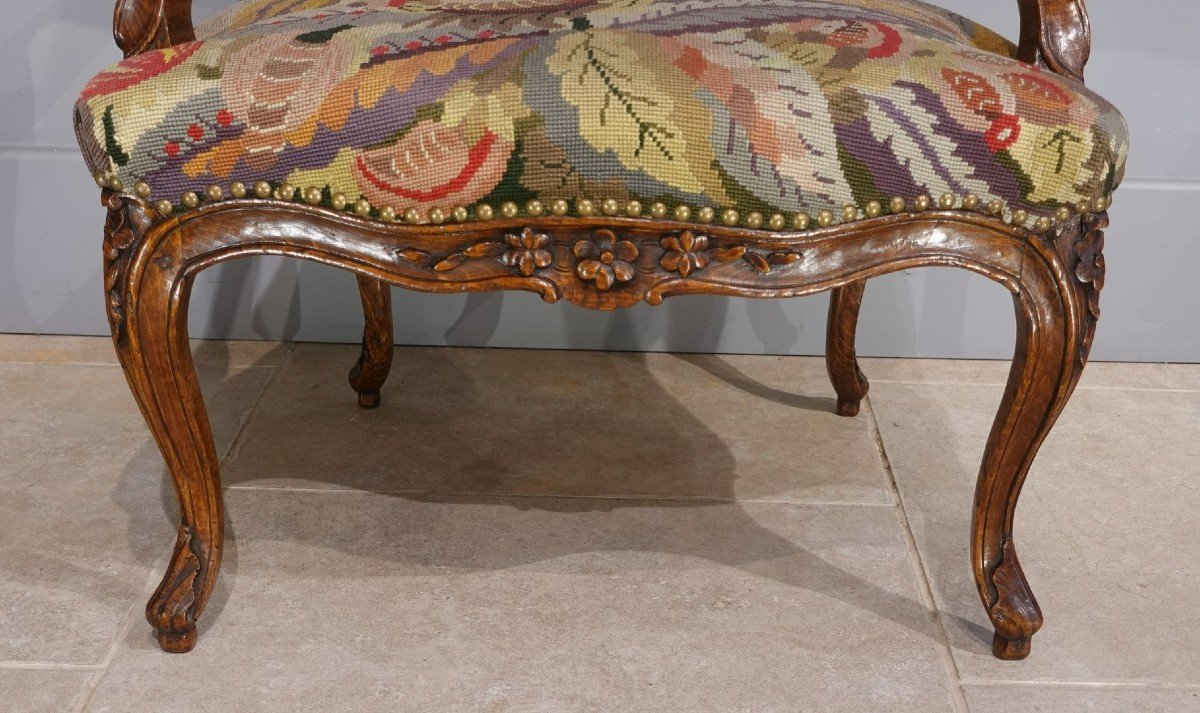
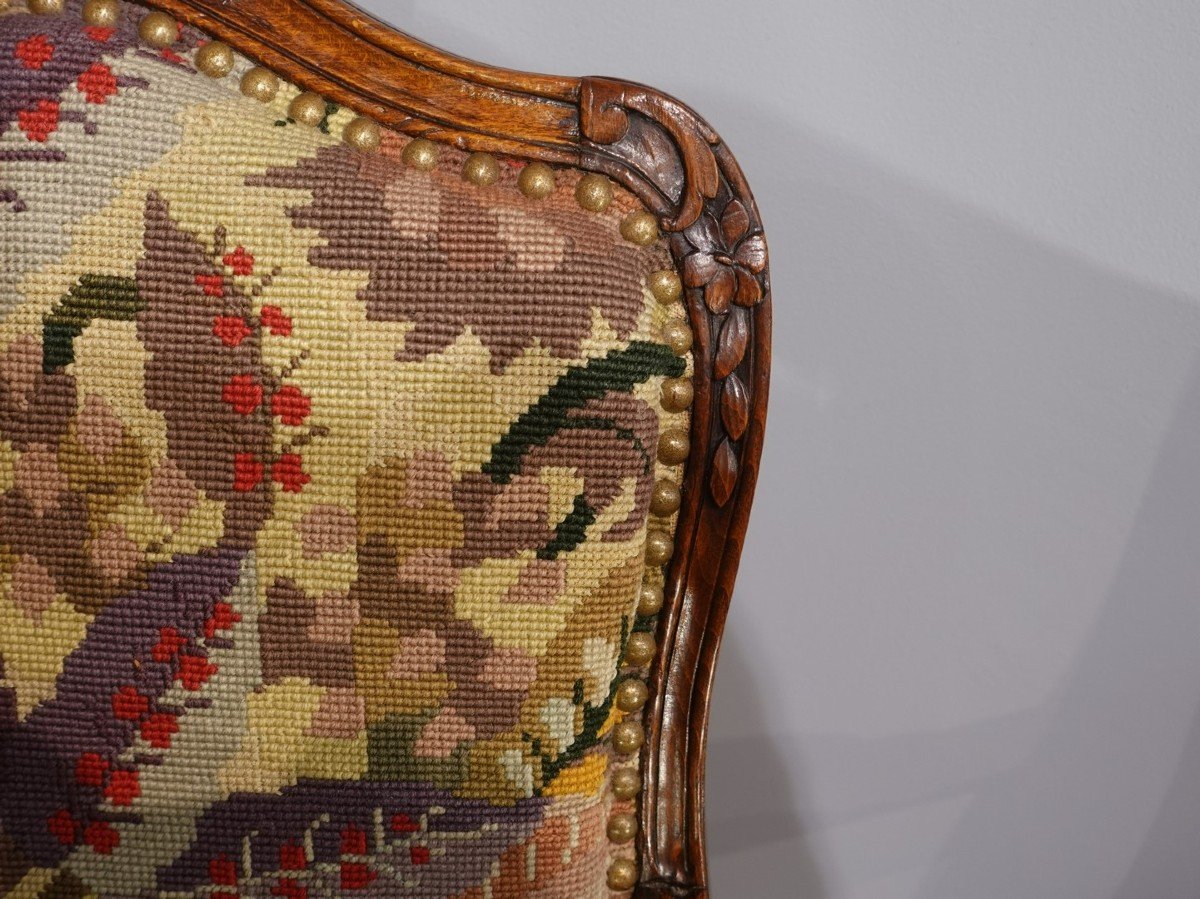



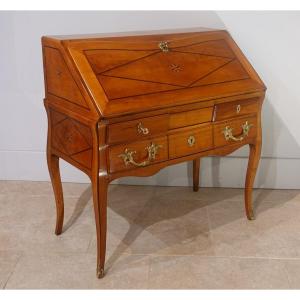





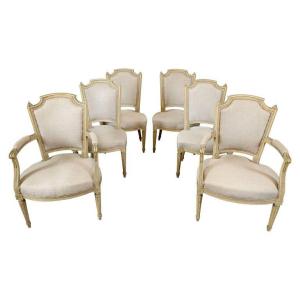


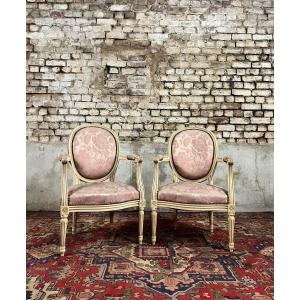
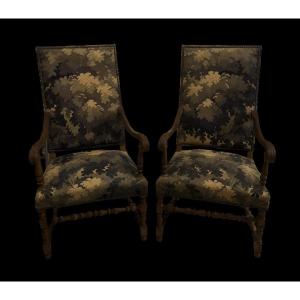




 Le Magazine de PROANTIC
Le Magazine de PROANTIC TRÉSORS Magazine
TRÉSORS Magazine Rivista Artiquariato
Rivista Artiquariato
